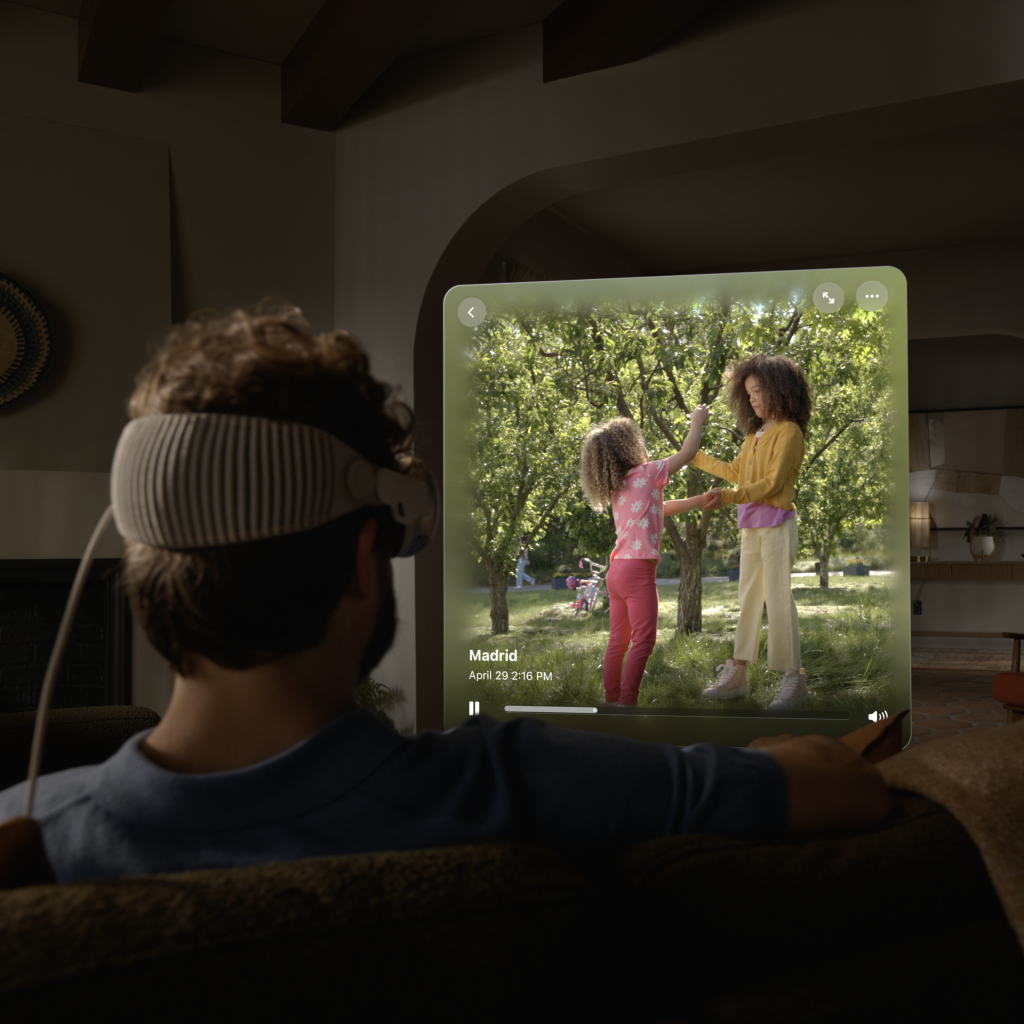
The Future of AR and VR: From Niche to Everyday Life
Augmented Reality (AR) and Virtual Reality (VR) technologies, once limited to gaming and entertainment, are now set to revolutionize many areas of daily life. Microsoft’s HoloLens, for example, enables real-time remote collaboration in industries like construction, allowing workers to share and modify 3D blueprints. In education, AR and VR offer immersive learning experiences, where students can explore virtual environments, conduct experiments, and interact with 3D models. In healthcare, AR helps surgeons overlay imaging data onto patients during operations, while VR is used to treat conditions such as PTSD and anxiety through controlled simulations (Statista, 2024).
Apple Vision Pro: Entertainment and Beyond
While AR and VR remain highly recognized for entertainment, particularly in gaming, Apple’s Vision Pro signals a shift towards broader applications. Unlike most VR headsets, which fully immerse users in virtual environments, Vision Pro blends digital content with the real world, allowing users to interact with virtual objects while remaining aware of their surroundings. This could allow users to browse apps, play immersive games, or attend virtual meetings, potentially making AR a regular part of daily life. However, the Vision Pro faces challenges, including bulkiness, short battery life, and a high price point, which limits its mass appeal (Apple Vision Pro Newsroom; Zuckerberg, 2024).
Challenges and Opportunities
For AR and VR to truly become a part of everyday life, they must overcome several key barriers. The high cost of hardware, limited practical applications, and user issues such as motion sickness have so far slowed their widespread adoption. Technical challenges like short battery life and significant privacy concerns—especially surrounding data collection—also complicate broader integration. Despite these hurdles, the potential of AR and VR is undeniable. These technologies are already making waves across industries like education, healthcare, retail, and professional services, transforming how we live and work.
As companies like Apple, Microsoft, and Meta continue to pour resources into AR and VR innovation, many of these challenges are likely to be addressed through iterative development. Improvements in battery life, affordability, and design could soon make these technologies essential tools in our daily routines. The transition from niche products to everyday essentials is well underway, and the future of AR and VR holds immense promise as they continue to reshape industries and redefine daily experiences.
References:
Apple (2024). Apple Vision Pro spatial video image. Available at: https://www.apple.com/newsroom/images/2024/01/apple-vision-pro-available-in-the-us-on-february-2/article/Apple-Vision-Pro-spatial-video.zip [Accessed 18 Sep. 2024].
Apple (2024). Apple Vision Pro Newsroom. Available at: https://www.apple.com/newsroom [Accessed 18 Sep. 2024].
Statista (2024). AR and VR market outlook. Available at: https://www.statista.com/outlook/amo/ar-vr/worldwide[Accessed 18 Sep. 2024].
Microsoft (2024). Microsoft HoloLens. Available at: https://www.microsoft.com/en-us/hololens [Accessed 18 Sep. 2024].
Zuckerberg, M. (2024). Reel on Apple Vision Pro. [Instagram post] Available at: https://www.instagram.com/zuck/reel/C3TkhmivNzt/ [Accessed 18 Sep. 2024].
